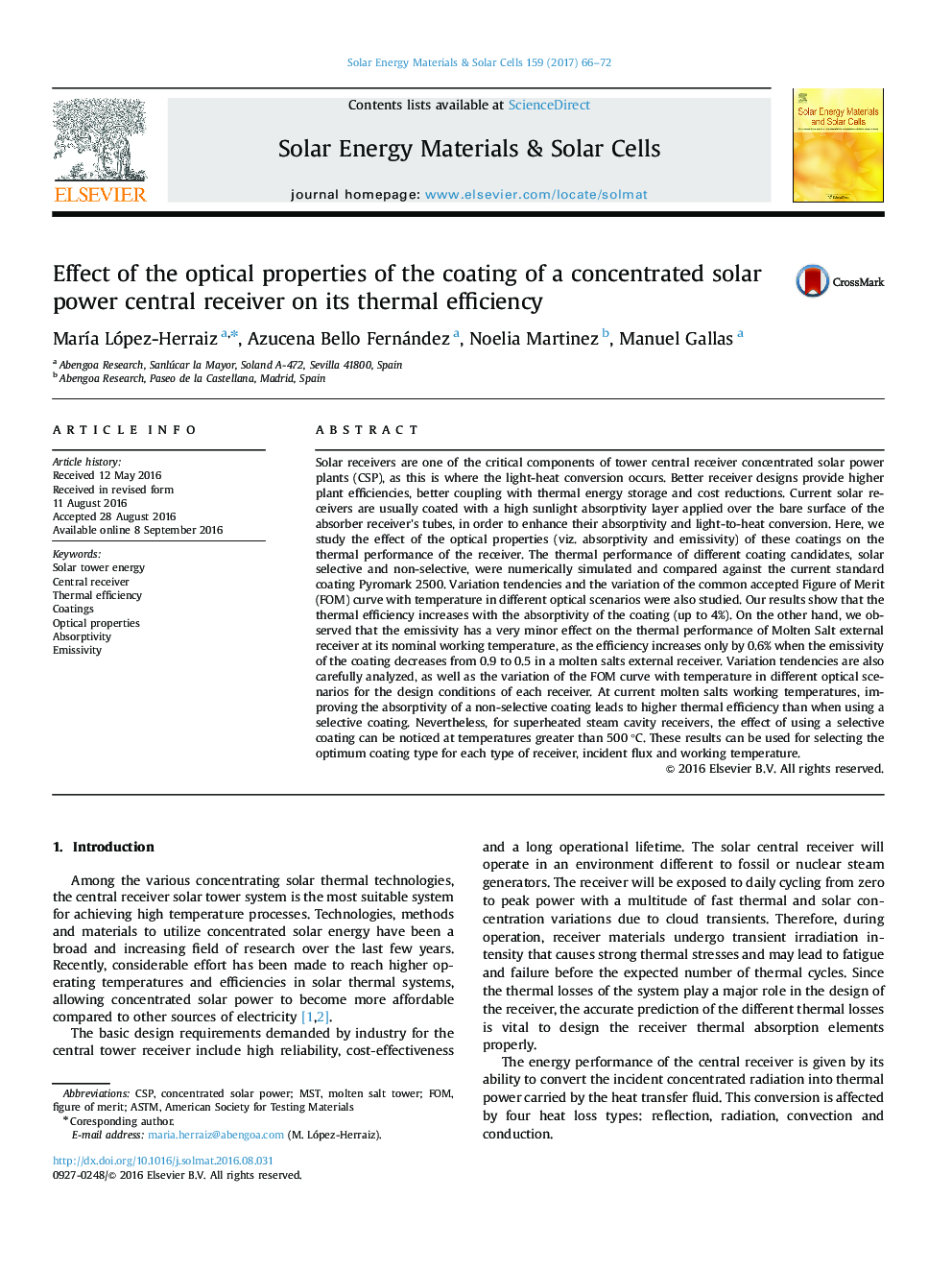| Article ID | Journal | Published Year | Pages | File Type |
|---|---|---|---|---|
| 6457448 | Solar Energy Materials and Solar Cells | 2017 | 7 Pages |
â¢Effect of absorptivity and emissivity over the thermal efficiency of two types of thermosolar receivers are studied.â¢Thermal performance of different coating candidates has been numerically simulated.â¢Figure of Merit (FOM) curves at different temperatures are also presented.â¢Reducing the emissivity of the coating material is more important in the case of SH-cavity type receiver.â¢Absorptance has a strong impact over the thermal efficiency of external receivers.
Solar receivers are one of the critical components of tower central receiver concentrated solar power plants (CSP), as this is where the light-heat conversion occurs. Better receiver designs provide higher plant efficiencies, better coupling with thermal energy storage and cost reductions. Current solar receivers are usually coated with a high sunlight absorptivity layer applied over the bare surface of the absorber receiver's tubes, in order to enhance their absorptivity and light-to-heat conversion. Here, we study the effect of the optical properties (viz. absorptivity and emissivity) of these coatings on the thermal performance of the receiver. The thermal performance of different coating candidates, solar selective and non-selective, were numerically simulated and compared against the current standard coating Pyromark 2500. Variation tendencies and the variation of the common accepted Figure of Merit (FOM) curve with temperature in different optical scenarios were also studied. Our results show that the thermal efficiency increases with the absorptivity of the coating (up to 4%). On the other hand, we observed that the emissivity has a very minor effect on the thermal performance of Molten Salt external receiver at its nominal working temperature, as the efficiency increases only by 0.6% when the emissivity of the coating decreases from 0.9 to 0.5 in a molten salts external receiver. Variation tendencies are also carefully analyzed, as well as the variation of the FOM curve with temperature in different optical scenarios for the design conditions of each receiver. At current molten salts working temperatures, improving the absorptivity of a non-selective coating leads to higher thermal efficiency than when using a selective coating. Nevertheless, for superheated steam cavity receivers, the effect of using a selective coating can be noticed at temperatures greater than 500 °C. These results can be used for selecting the optimum coating type for each type of receiver, incident flux and working temperature.
